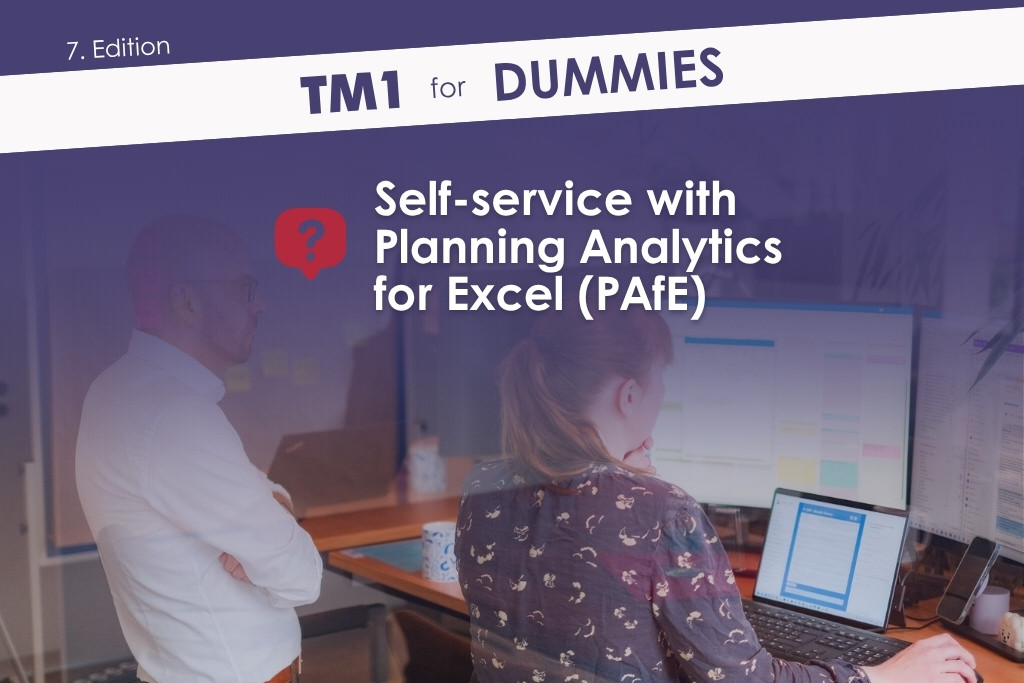Excel has become an indispensable tool in controlling. There is hardly a department that does not use tables, pivot analyses, or self-made calculations to keep track of figures. This is exactly where IBM Planning Analytics for Excel (PAfE) comes in. Instead of completely replacing Excel, PAfE combines the familiar working environment with the power of the TM1 database.
Note: For historical reasons, the term “TM1” is often still used synonymously with “IBM Planning Analytics,” but today it officially refers only to the database engine.
What is Planning Analytics for Excel (PAfE)?
PAfE is an add-in for Microsoft Excel that establishes a direct connection to the TM1 database. In other words, Excel remains the user interface, but the data and calculations come directly from the central planning system.
This means:
- No more data proliferation: Instead of manually merging different Excel files, all users access the same database.
- Centralized logic, decentralized use: Calculations and business rules are stored in the TM1 model, while departments can flexibly perform evaluations and make entries in Excel.
- Easy to use: Anyone familiar with Excel will quickly find their way around PAfE.
Self-service in controlling – without compromising governance
Many companies face a dilemma: departments want to work flexibly, while IT wants to maintain central control. PAfE resolves this conflict.
- Self-service for users: Build reports, analyze data, make entries for planning and forecasts—all without relying on IT.
- Governance remains guaranteed: The data is not stored locally, but on the TM1 server. Calculations follow the stored rules. Security and authorization concepts apply as usual.
This allows departments to work flexibly without compromising data quality.
Typical applications for PAfE
- Reporting: Instead of sending static Excel lists, controllers can retrieve current figures directly from TM1 at any time. Changes in the database are visible immediately.
- Ad hoc analyses: Dimensions and key figures can be combined as desired using drag & drop – similar to pivot tables, but with a significantly stronger database in the background.
- Planning & forecasting: Departments enter their values directly into Excel, which are immediately stored in TM1. This means that all entries are available centrally and consistently.
Advantages at a glance
- Familiar interface: No need to learn a new tool—Excel remains the central working tool.
- Live data: Figures are always up to date because they come directly from the TM1 database.
- Centralized logic: Calculations and business rules are stored in the model, not in individual Excel formulas.
- Self-service: Users can create reports and entries independently, without IT support.
- Scalability: From simple ad hoc evaluations to complex planning processes – PAfE grows with you.
What you should bear in mind
As with any software, there are a few points to keep in mind: For PAfE to run optimally, the add-in must be installed correctly and kept up to date. With very large Excel files, performance may depend on your own PC equipment. And: PAfE is most effective when the TM1 models in the background are well structured—it is worth working with experienced consultants here.
Conclusion: The bridge between Excel and TM1
Planning Analytics for Excel helps companies bridge the gap: business users can keep working in their familiar environment, while the central TM1 database ensures consistency, security, and performance.
PAfE is the easiest way for beginners to Planning Analytics to experience the benefits of the system in everyday use—without having to give up Excel.
👉 Would you like to find out how PAfE can be used in your company? Contact us—we will show you how self-service works in controlling today in a practical way.







